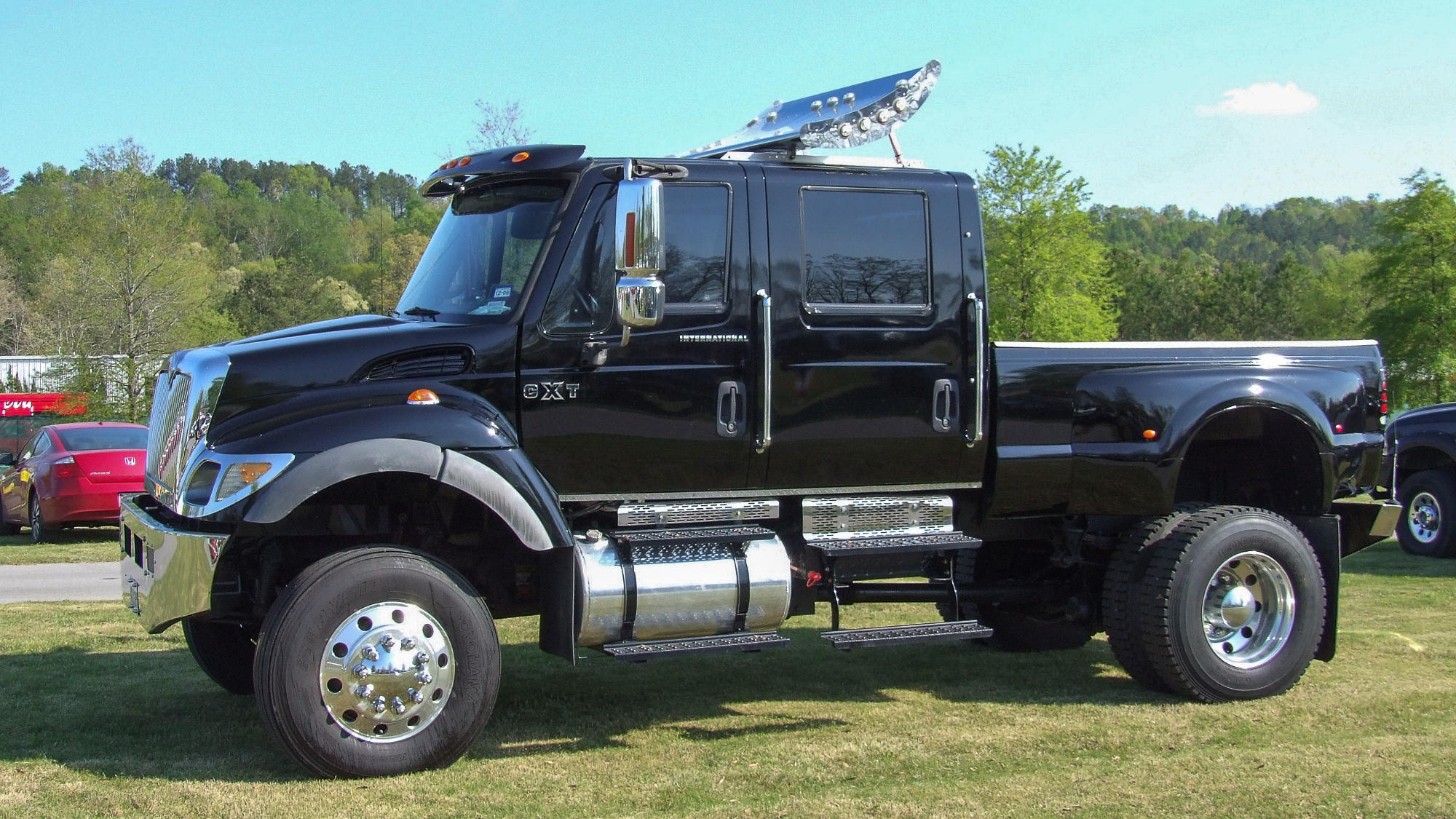
Driving on today’s highways often involves navigating around large commercial trucks. These essential vehicles, while vital to our economy, present unique challenges for other drivers, especially when passing. Successfully and safely overtaking a slow-moving truck isn’t just about getting ahead; it’s mastering a critical skill that enhances road safety for everyone and helps maintain a steady flow of traffic.
The potential for accidents involving large trucks is a significant concern. The National Highway Traffic Safety Administration (NHTSA) reported that large trucks were involved in over 500,000 crashes in 2021, with many attributed to improper passing. Unsafe passing can lead to disastrous consequences, including collisions, sudden lane changes, and abrupt braking, putting all road users at risk. Understanding these interactions is essential for proactive accident prevention.
This comprehensive guide empowers you with the knowledge and techniques to pass slow-moving trucks confidently and without collision risk. We’ll delve into vital considerations, from recognizing truck blind spots to executing precise maneuvers. By adopting these authoritative, safety-focused strategies, you’ll not only protect yourself but also contribute to a safer driving environment for all on the highway.

1. **Understand Truck Blind Spots: The ‘No-Zones’**One of the most crucial aspects of safe passing involves a thorough understanding of a truck’s blind spots, commonly known as ‘no-zones.’ Due to their immense size and design, commercial trucks have significant areas where the driver’s visibility is severely limited. These are critical safety zones every driver must recognize and actively avoid to prevent catastrophic incidents on the highway.
These hazardous blind spots are typically located in several key areas. There’s a substantial blind spot directly behind the truck, making it dangerous to follow too closely. Significant ‘no-zones’ also exist along the sides, especially the right, which is often larger than the left. A considerable portion in front of the truck also falls within these blind areas. All drivers must internalize these dimensions for optimal safety.
To gauge if you are in a truck’s blind spot, remember: ‘If you can’t see the truck driver’s mirrors, they likely can’t see you either.’ This simple rule is an immediate indicator of a precarious position. Lingering in these ‘no-zones’ significantly elevates collision risk, as the truck driver may inadvertently change lanes without seeing your vehicle, leading to dangerous situations.
Therefore, proactively maintain a safe distance and ensure you are always visible to the truck driver. When passing, do so quickly and efficiently, minimizing time spent in blind spots. Always use your turn signals clearly to communicate intentions, giving the truck driver ample warning. Awareness and swift action are your best defenses against truck ‘no-zones.’
Read more about: Mastering the Unseen: Comprehensive Strategies to Conquer Driving Blind Spots Without Constant Mirror Adjustments

2. **Utilize Turn Signals and Mirrors Effectively**Effective communication is the bedrock of safe driving, especially when passing trucks. Your turn signals and mirrors are primary tools for conveying intentions. Neglecting their proper use is dangerous and can disrupt traffic flow, creating confusion and increasing the likelihood of hazardous interactions on multi-lane roads.
When preparing to pass a truck, activate your turn signal well in advance of your lane change. This clear signal tells the truck driver your intention to move. Providing this early warning allows the truck driver valuable time to anticipate your actions and adjust their driving, such as maintaining lane position, to accommodate your maneuver safely. This proactive signaling greatly enhances road safety.
Alongside signaling, skillful use of your mirrors is indispensable. Before any pass, conduct a thorough check of your rearview and side mirrors. Ensure there is sufficient space and time to safely execute the maneuver. This initial assessment prevents cutting off other vehicles or entering a situation requiring rapid acceleration or sudden adjustments.
Throughout the entire passing process, from signaling to safe re-entry, consistently checking your mirrors is crucial. Regularly scanning mirrors keeps you aware of surrounding traffic, monitors the truck’s position, and identifies potential hazards. By diligently using signals and mirrors, you establish clear communication, significantly minimizing risks and ensuring a safer passing experience on the highway.
Read more about: Master the Wild: 14 Essential Survival Gear Items for Any Outdoor Challenge

3. **Embrace Patience and Alertness**In highway driving, patience and unwavering alertness are non-negotiable, particularly when passing large trucks. Rushing to pass, driven by impatience, invites dangerous situations and contributes significantly to accidents. Resist risky maneuvers; instead, cultivate a mindset of calm, calculated decision-making on the road.
Driving professionally means recognizing that not every passing opportunity is safe. Remain patient and wait for the unequivocally right moment to pass. This involves assessing clear visibility, adequate space, and the absence of impediments. Forcing a pass when conditions are not ideal dramatically increases accident likelihood, often with severe consequences.
While patiently waiting, maintaining high alertness to your surroundings is critical. Continuously scan the road ahead for changes in traffic flow, hazards, or road conditions. Regularly check your mirrors to stay informed about vehicles around you, providing a comprehensive understanding of the traffic environment.
Distractions are an ever-present threat. Using your phone or engaging in activities that divert focus is incredibly dangerous, especially during complex maneuvers like passing a truck. Prioritizing patience and constant alertness empowers you to make informed, safe decisions, ensuring a smoother and safer passing experience. Remember, you don’t have anything to prove, except your commitment to safety.
Read more about: Archaeologists Uncover 115,000-Year-Old Human Footprints Where They Shouldn’t Be: A Deep Dive into the Science of Discovery

4. **Recognize Key Truck Differences: Weight, Speed, and Wind**To safely pass a large truck, it is essential to comprehend that these vehicles operate under vastly different physical dynamics than a passenger car. Trucks are not just bigger cars; they are fundamentally distinct machines. Their operational characteristics demand a different approach from surrounding traffic. Understanding these core differences forms the foundation of confident and safe passing.
One significant distinction is their sheer weight and mass. Trucks take considerably longer to accelerate and, more critically, require a much greater distance to stop. This prolonged braking distance means they cannot react as quickly to sudden road changes. When passing, this characteristic dictates you must provide ample space and avoid maneuvers that would necessitate abrupt stops by the truck driver.
Another unique challenge is wind turbulence. If your car sways when passing a semi-truck, you’ve experienced this. The immense air volume displaced by a fast-moving truck creates significant pressure. This can exert a tangible push or pull on smaller vehicles, making it challenging to maintain a steady lane position for unprepared drivers.
These fundamental differences — immense weight affecting stopping/acceleration and destabilizing wind turbulence — directly impact how you should approach passing. Recognizing that trucks cannot maneuver with the same agility as your car compels you to plan your pass with greater foresight and execute it with precision. Always give these behemoths the respect and space they require. Your awareness of these truck characteristics is key to your safety.

5. **Master Pre-Pass Preparation: Road & Vehicle Assessment**Effective passing of a large truck starts with meticulous pre-pass preparation. This critical step ensures success and minimizes risks. Before contemplating a lane change, thoroughly assess both prevailing road conditions and your vehicle’s capabilities. This is imperative for a safe maneuver.
Foremost is a careful evaluation of road conditions. Passing a truck on a wet, icy, or compromised road surface dramatically escalates risks. Reduced traction and diminished visibility in adverse weather severely impact control. Always ensure the weather is clear, the road is dry, and visibility is optimal before deciding to pass.
Concurrently, honestly assess your vehicle’s speed and power. A safe pass requires your car to accelerate quickly past the truck, minimizing time spent alongside it, especially in its ‘no-zones.’ If your vehicle lacks the necessary acceleration for a swift pass, it is safer to defer the maneuver. Patience for a suitable opportunity prioritizes safety.
Finally, signal early as part of your pre-pass strategy. Use your turn signal clearly to communicate intentions to all drivers, including the truck driver. This early communication is fundamental to road safety, allowing everyone to anticipate your actions. Proper preparation—environmental awareness, vehicle capability assessment, and clear communication—lays the groundwork for a confident passing experience.

6. **Maintain a Safe Following Distance Before Passing**As you prepare to pass a slow-moving truck, establishing a safe following distance is critical. Driving too closely behind a large truck, or tailgating, is highly dangerous. This risk is amplified by heavy vehicles’ longer stopping distances and significant blind spots directly behind them.
Staying too close to the truck’s rear severely compromises your ability to see the road ahead. Your view of hazards, traffic changes, or sudden braking is limited. This reduced visibility drastically cuts reaction time, making it nearly impossible to respond safely if the truck slows down abruptly. Such a scenario can quickly escalate into a devastating rear-end collision.
To ensure safety and visibility, maintain a minimum distance of at least 30 feet between your car and the truck. This generous space provides a necessary buffer zone. It allows you to anticipate the truck’s movements, react to unforeseen circumstances, and gain a clearer perspective of the road ahead, beyond the truck’s trailer.
Preserving this safe following distance gives you crucial time and visibility. It allows you to calmly assess traffic, plan acceleration, and clearly signal intentions without feeling rushed. It’s a foundational step for a safe and efficient pass, ensuring you have the room needed to maneuver securely.
Read more about: Smart Choices for the Golden Years: 12 Top SUVs Retirees Should Consider Buying in 2025

7. **Execute the Pass Swiftly and Steadily**With all preparations complete—road assessed, vehicle evaluated, mirrors checked, and intentions signaled—the moment arrives to execute the pass. This stage demands confidence and precision. The goal is to get past the truck decisively, predictably, and with minimal risk. Hesitation or abrupt movements can quickly turn a safe maneuver into a dangerous one.
When the path is clear and safe, smoothly move into the left lane, the universally recognized ‘passing lane.’ Simultaneously, begin to accelerate steadily. Emphasis is on ‘smoothly’ and ‘steadily.’ Avoid sudden, jerky accelerations that could surprise other drivers or cause loss of control. Your objective is to achieve a sufficient speed differential to overtake the truck efficiently and without unnecessary delay, while adhering to speed limits.
Crucially, once alongside the truck, do not linger. The longer you remain parallel to the truck, especially near its extensive blind spots, the higher the risk. This area is notoriously dangerous, as both drivers have limited visibility. The quicker you complete the pass, ensuring your vehicle is entirely clear of the truck’s ‘no-zones’ and well ahead, the safer the maneuver will be. Swift execution is a cornerstone of safe truck passing.
Throughout the entire passing sequence, from initiating your lane change to being fully past the truck, keep your vehicle’s lane steady. Avoid any tendency to swerve or make sudden, erratic movements. A predictable, consistent path makes it easier to maintain control and allows the truck driver to accurately track your position. This steady, controlled execution is the hallmark of a skilled and responsible driver, contributing to a safer flow of traffic.
Read more about: A Perilous Miscalculation: When Pirates Attacked the Unyielding Power of Warships and Faced Swift Defeat

8. **Post-Passing Procedures: Safe Re-entry**After successfully overtaking a large truck, the process isn’t over. A critical final step is ensuring a safe return to your original lane. This post-passing procedure requires careful attention and adherence to established safety guidelines to avoid creating new hazards for yourself and the truck driver.
The primary rule for safe re-entry is to not merge back into the right lane until you can clearly see the entire front of the truck in your rearview mirror. This visual confirmation is your definitive signal that you have established sufficient space between your vehicle and the truck. Rushing this step, or merging too soon, can force the truck driver to brake or swerve, initiating a dangerous chain reaction due to their extended stopping distances and limited maneuverability.
Once you’ve confirmed ample space, activate your turn signal again to indicate your intention to merge back into the right lane. Perform a final, thorough check of your mirrors to ensure the path is clear of any other vehicles. Then, smoothly and gradually guide your vehicle back into your original lane, maintaining your speed to ensure a continuous flow of traffic. This deliberate and well-communicated re-entry is vital for solidifying a safe passing maneuver.

9. **Maintaining Speed and Awareness After the Pass**Having successfully navigated past a slow-moving truck and re-entered your lane, it’s imperative to maintain your speed and remain highly aware of your surroundings. The immediate aftermath of a pass is not the time to relax your vigilance or make sudden changes, as this can still pose risks to the truck you just passed and other vehicles on the road.
One common error to avoid is slowing down immediately after completing the pass. Trucks require significantly longer distances to stop, and a sudden deceleration from your vehicle can place the truck driver in a precarious situation, potentially leading to a rear-end collision. Continue to maintain a steady, safe speed for a reasonable distance, allowing the truck ample time to adjust to your new position ahead of it.
Furthermore, never let your guard down. Continue to monitor the truck in your mirrors for a little while, observing its behavior, speed, and any potential signals. This sustained awareness ensures you are prepared for any changes in the truck’s driving pattern that might affect your driving or require further adjustments. By remaining vigilant and maintaining appropriate speed, you contribute to overall road safety and prevent unexpected hazards.
Read more about: Carrie Ann Inaba’s Emotional Absence: Unpacking Her Health, the DWTS Family’s Support, and What Lies Ahead for Season 34’s Premiere

10. **Common Errors to Avoid: Cutting Off Trucks and Passing on the Right**Even experienced drivers can fall victim to common pitfalls when passing large trucks. Recognizing and actively avoiding these errors is as crucial as mastering the correct passing techniques. Two particularly dangerous mistakes involve prematurely merging back into a lane and passing on the wrong side of the truck.
Cutting off a truck is a critical error that can have severe consequences. This occurs when a driver merges back into the right lane too soon, without allowing adequate space between their vehicle and the truck’s front. Due to their immense weight, trucks need considerably more space and time to stop or slow down. If you cut a truck off, you force the driver to react abruptly, potentially leading to emergency braking, loss of control, or a devastating collision where your smaller vehicle is at a distinct disadvantage.
Another significant mistake is passing a truck on the right side. While legal in some specific scenarios, it is generally discouraged and considerably riskier than passing on the left. Truck drivers have substantially larger blind spots on their right-hand side, often referred to as the ‘passenger side no-zone.’ If you attempt to pass on the right, there is a much higher probability that the truck driver will not see your vehicle, making it extremely dangerous if they need to change lanes or maneuver. Always prioritize passing on the left whenever possible, using the designated passing lane for maximum safety.

11. **Avoiding Misjudgement and Multiple-Car Passes**Beyond cutting off and passing on the right, other common misjudgments and habits can turn a routine passing maneuver into a dangerous encounter. Developing a precise understanding of truck speeds and practicing disciplined passing behavior are essential for minimizing risks.
One frequent error is misjudging a truck’s speed. Large trucks, due to their sheer size and consistent momentum, can sometimes appear to be moving slower than they actually are. This misperception can lead drivers to initiate a pass without sufficient speed differential or to linger alongside the truck for too long, placing themselves in a dangerous situation. Always assume a truck is moving faster than it seems and ensure your vehicle has the power to pass it quickly and efficiently, never underestimating its pace.
Another perilous scenario arises when more than one car attempts to pass a truck simultaneously. This practice, often seen in heavy traffic, drastically increases the risk of collision. If multiple vehicles are passing at once, it is almost guaranteed that at least one of them will end up in the truck’s extensive blind spot for an extended period. Furthermore, such a maneuver creates a complex interaction where drivers might collide not only with the truck but also with each other, leading to a potentially devastating multi-vehicle crash. Always let one car pass at a time, allowing for clear communication and ample space.

12. **Defensive Driving and Situational Adjustments: Hills, Curves, and Weather**Safe passing of slow-moving trucks isn’t a one-size-fits-all maneuver; it demands defensive driving and specific situational adjustments based on road and environmental conditions. Prudent drivers understand that certain circumstances inherently increase risk, necessitating extra caution or even deferral of a pass.
It is highly advisable to avoid passing trucks on hills or curves. These topographical features significantly reduce your line of sight and overall visibility, limiting your ability to assess oncoming traffic or unexpected hazards. When visibility is compromised, your reaction time is drastically diminished, making a safe pass exceptionally difficult, if not impossible. Always wait until you have a clear, unobstructed view of the road ahead before attempting to overtake a truck.
Weather conditions also play a pivotal role in passing safety. Wet or icy roads can severely affect your vehicle’s stopping distance and tire traction, making any high-speed maneuver, including passing, inherently dangerous. Reduced visibility due to rain, fog, or snow further compounds these risks. Always adjust your speed and your decision to pass based on prevailing weather; sometimes, the safest decision is to remain behind the truck until conditions improve. Patience and awareness are crucial, and aggressive driving or rushing a pass in adverse conditions should always be avoided.

13. **Legal Considerations and Crash Statistics**Adhering to safe passing practices is not merely a matter of personal safety; it is also a legal obligation with significant consequences for non-compliance. Traffic laws are designed to ensure the orderly and safe flow of vehicles, and violations, especially those involving large trucks, carry serious implications.
Traffic laws require all drivers to pass safely and responsibly. Failing to do so can result in hefty fines, license points, and, more importantly, can put lives at risk. The consequences extend beyond legal penalties; unsafe passing significantly contributes to severe accidents. According to the Insurance Institute for Highway Safety (IIHS), a sobering statistic from 2022 revealed that 96% of vehicle occupants killed in two-vehicle crashes involving a passenger vehicle and a large truck were occupants of the passenger vehicles. This highlights the inherent danger for smaller vehicles in such collisions and underscores the critical importance of caution.
In specific regions, such as Texas, truck accidents account for a substantial portion of roadway incidents. If negligence is a factor in such crashes, the legal ramifications can be severe for those involved. Understanding and following established traffic laws for passing trucks is not just good practice; it’s a fundamental component of maintaining road safety for everyone. In the unfortunate event of a truck accident, seeking advice from a qualified truck accident lawyer can help navigate the complexities of legal rights and settlements.
Read more about: Driving Expert’s ‘Clever’ Hack: Stop Tailgaters Safely Without Ever Touching Your Brakes

14. **The Role of Technology (Dashcams) and Continuous Learning**As roadways evolve and driving becomes increasingly complex, technology and continuous learning play an ever-more vital role in promoting safety, especially when interacting with large commercial vehicles. Drivers now have access to tools and resources that can enhance their understanding and preparedness.
One significant technological advancement is the widespread use of dashcams. These devices, increasingly common in both commercial trucks and passenger vehicles, provide invaluable footage in the event of an accident. This recorded evidence can be crucial for clarifying events, determining fault, and streamlining insurance claims. Knowing that ‘smart truck drivers have some sort of dash camera to record constantly what lies in front of them’ serves as a reminder for all drivers to operate with heightened responsibility and awareness, as their actions are likely being observed and recorded.
Beyond technology, the commitment to continuous learning is paramount. The dynamics of traffic, vehicle technology, and road regulations can change, making it essential for drivers to stay informed. Regularly reviewing safety guidelines related to truck driving and passing maneuvers ensures that your knowledge remains current and comprehensive. By implementing safe passing practices and continuously enhancing your understanding, you not only improve your own safety but also contribute to a more responsible and aware driving community, making our highways safer for everyone.
Passing slow-moving trucks on the highway doesn’t have to be a source of anxiety or a high-risk endeavor. By integrating a deep understanding of truck dynamics, practicing diligent pre-pass preparation, executing maneuvers with confidence and precision, and maintaining situational awareness, you can navigate these common scenarios safely and efficiently. Remember, every decision you make on the road impacts not just your journey, but the safety of all who share the highway. Embrace patience, utilize clear communication, and commit to continuous learning to become a truly confident and responsible driver. Mastering the art of safe passing is about respecting these powerful vehicles and upholding the collective goal of safer roads for everyone.



